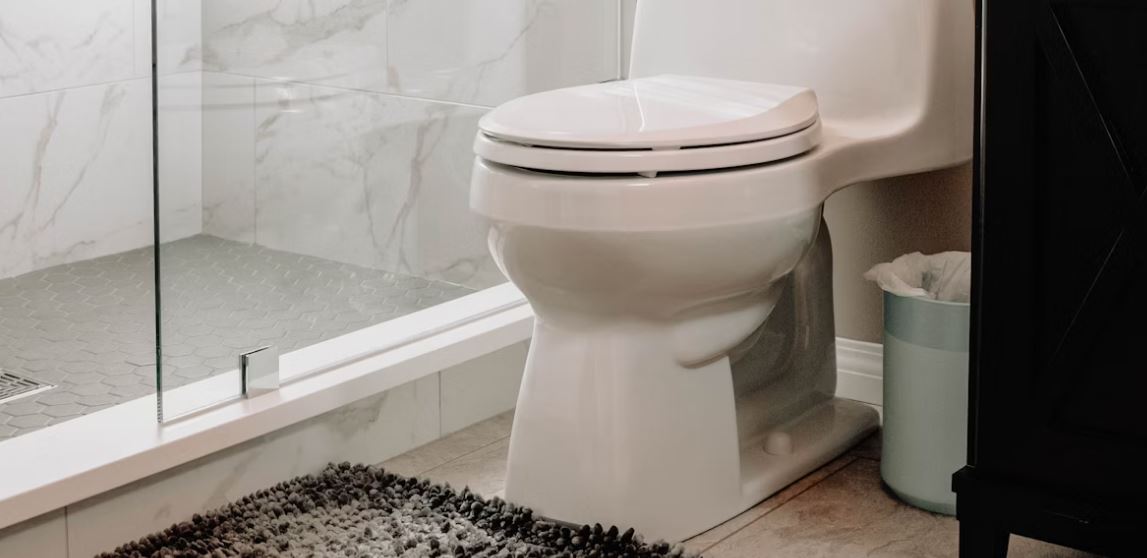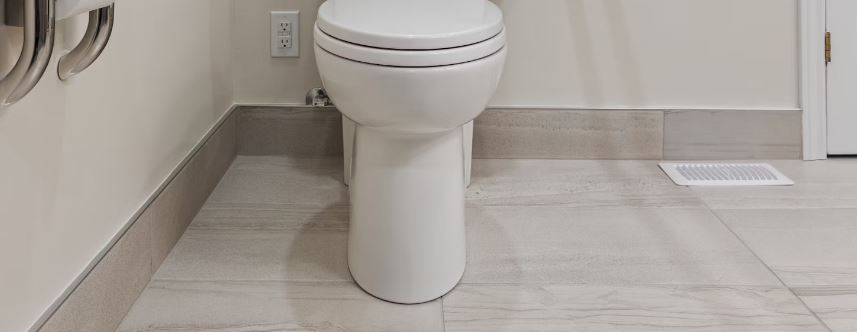
Having a wobbly or loose toilet is not just annoying, it can also cause leaks and damage your toilet and house over time.
One of the main culprits of an unstable toilet is an unlevel toilet flange.
The flange is the circular piece that connects the toilet to the drain pipe and secures it to the floor. If this is not installed perfectly, you’ll run into problems.
In this post, I’ll go over everything you need to know if your toilet flange is not level.
Let’s have a look at the tell-tale signs of an uneven toilet flange first:
Also Check Out: Compact Pulse Smart Electric Toilet with Dual-Flush Technology
The most obvious sign of a flange issue is if your toilet rocks or wobbles when you sit on it or try to wiggle it by hand. You might probably be able to lift it up slightly too.
This instability indicates the flange is not level, causing the toilet to sit unevenly.
The toilet has to be connected to the flange, but must not sit on the flange but flush on the floor.
Leaking is another indicator of a flange not being level.
An unlevel flange can compromise the seal between the toilet and floor, and allow water to leak out over time.
This moisture can damage floors and create an unsanitary situation.
Now that you know the signs, it’s time for us to look at solutions:
Sometimes the simplest solution is to gently tap it down if it’s sticking up too high.
Lay a level across the flange and use a hammer to very carefully tap down the high side until it’s flush with the floor.
Also Read: Toilet Flange 1/2 Above Floor
Go slowly and check frequently to avoid damaging the flange.
If tapping can’t get the flange flush, you may need to install flange extenders or repair rings.
These fit over the existing flange to raise the height to the proper level. Use a repair ring that has an inner diameter that won’t intrude on the wax ring seal.
In some situations, the flange may be too damaged or excessively unlevel to repair.
In this case, you’ll need to fully remove the flange and replace it with a new one set at the proper height. This may require accessing the drain pipes from below if possible.
Here are the basic steps for replacing a flange:
1. Turn off the water supply and drain the toilet tank and bowl completely.
2. Remove the toilet tank and bowl to access the flange.
3. Remove the existing flange from the drain pipe (may require cutting).
4. Install and secure a new flange at the proper height for your flooring.
5. Reinstall a new wax ring and reattach the tank and bowl.
When the flange height discrepancy is relatively minor, you may be able to use shims or a thicker wax ring with extra cushion to level out the base.
However, these are temporary band-aid fixes – having the flange installed properly is ideal.
Many toilet flange problems occur because they were never secured properly to the subfloor.

Let’s look into securing the flange properly:
Flanges should have screw holes around the perimeter that allow you to drive in screws and anchor it firmly to the subfloor or slab below.
Also Read: Large Gap Between Toilet And Floor
Use corrosion-resistant screws like stainless steel or brass. This prevents the screws from rusting.
Attach wooden shims below the flange if needed to raise it up slightly.
The flange lip should make full contact with the finished floor surface with no gaps.
In addition to the flange being level and anchored down, the drain pipe needs to be properly supported and secured.
If the pipes below are misaligned, that transferred instability will affect the flange and toilet above.
You have to check the pipes from the crawlspace or basement and correct any issues.
An unlevel toilet flange can lead to a wobbly toilet, leaks, and potential damage over time.
Solutions range from adjusting the flange height and installing extenders or repair rings to ultimately replacing the flange if necessary.
Properly securing the flange to the floor and ensuring the drain pipe is properly supported are essential steps in maintaining a stable and leak-free toilet too.




Leave a comment